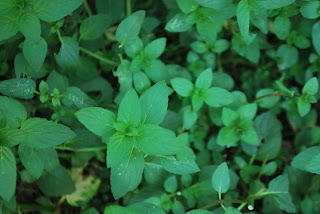 |
| The Subaru is the Ubiquitous Vermont Food Supply Line |
Food, too, travels to most Americans over supply lines, and those supply lines start with the truck that picks up the food at the farm or slaughterhouse and continues through either the truck that delivers the goods to your urban neighborhood store, or the car that delivers the groceries into your driveway in the small towns, vast suburbs and urban regions outside of dense city centers. For most of our food products, this means thousand of miles of foreign-fuel burning transit, billions of taxpayer dollars supporting road construction and maintenance, and the vast spacial and economic inefficiency of millions of Americans each sitting all alone in a several-thousand-pound, several tens of thousands of dollars worth of machine every day to obtain a 20 pound bag of bread, milk and cookies.
There is admittedly some strengths in this system. Most notably, it's more a web than a line, with enough inherent redundancy that if one thread of the supply system fails there are some others to man the gap. If, for example, my car breaks down and I'm out of celery, I can borrow my neighbor's car or ask her to pick me up some celery while she's doing her own shopping. The food will still get to my house.
Further up the ladder this resilience is less strong. A leap in fuel prices, a trucker's strike, or a bad round of weather at the source (or a cloud of radiation from Japan) cold nip off one supply line of food, creating upward jumps in food prices if not outright scarcity in the market. We've seen hints of this with things like particularly bad winters in Florida that have put a dent in the citrus crop. But none of us starved in those years when the citrus crops failed, we just skipped fresh oranges and bought apples from New Zealand instead.
The downside of all this supply line system redundancy is its expense. We pay for highways and bridges and tunnels, car and truck purchases and maintenance, and that's just the start. Air pollution. Landfills. Deaths and injuries in car accidents. Political wars over where it's appropriate to drill for oil. Ecological disasters when oil rigs rail. Wars over oil-rich foreign lands. All to move food along the supply line to our table--or to earn the money to buy the food and pay for the vehicle that brings it home.
If you don't know how we created this mind-shatteringly expensive car-and-truck dependent food supply line system, take a read of James Howard Kunstler's now iconographic book The Geography of Nowhere. If you're unfamiliar with the history of American landscape architecture, it provides a brilliant overview (though be prepared for the author's insertion of strong personal opinion regarding certain architects -- fans of Mies Van Der Rohe, take warning). Suffice it to say that the Federal government and General Motors played major roles, but you'll have to read the book to find out exactly how.
Being more of a pragmatist than a finger-pointer, I have to note that the public obligingly leapt to buy those Levittown houses and shiny new Mustangs. I tend to focus my efforts on trying to understand what was so attractive about the automobile-shaped landscape rather than whose fault it was. Fact is, it's here, and we can't afford it. So how can we use the best elements of it to build a better, more economically realistic model for the future?
Growing food in the suburbs and urbs--and harvesting water in those urbs, too--would seem the most logical approach. Every time I pick a salad from the front yard for dinner, I've diminished the number of times my ubiquitous Vermont Subaru Forester (nearly 200,000 miles and running just fine) leaves the driveway and runs the 4 miles to and 4 miles from the supermarket.
About a quarter of my little neighborhood has substantial gardens; if the other three-quarters grew their own veggies, too, then over time the local economy would only bear smaller supermarket spaces, with smaller parking lots. There'd be fewer trucks of produce running from California and Florida to Vermont. We would lighten our dependency on the very expensive supply lines in favor of food produced at hand. The advantage of redundancy would still be in effect, as now we'd simply have multiple food sources within a 100 yard radius. If I was out of celery, I could knock on the door a neighbor who grows great celery and ask to swap for some spaghetti squash.
Now that's an inexpensive, secure supply line.








